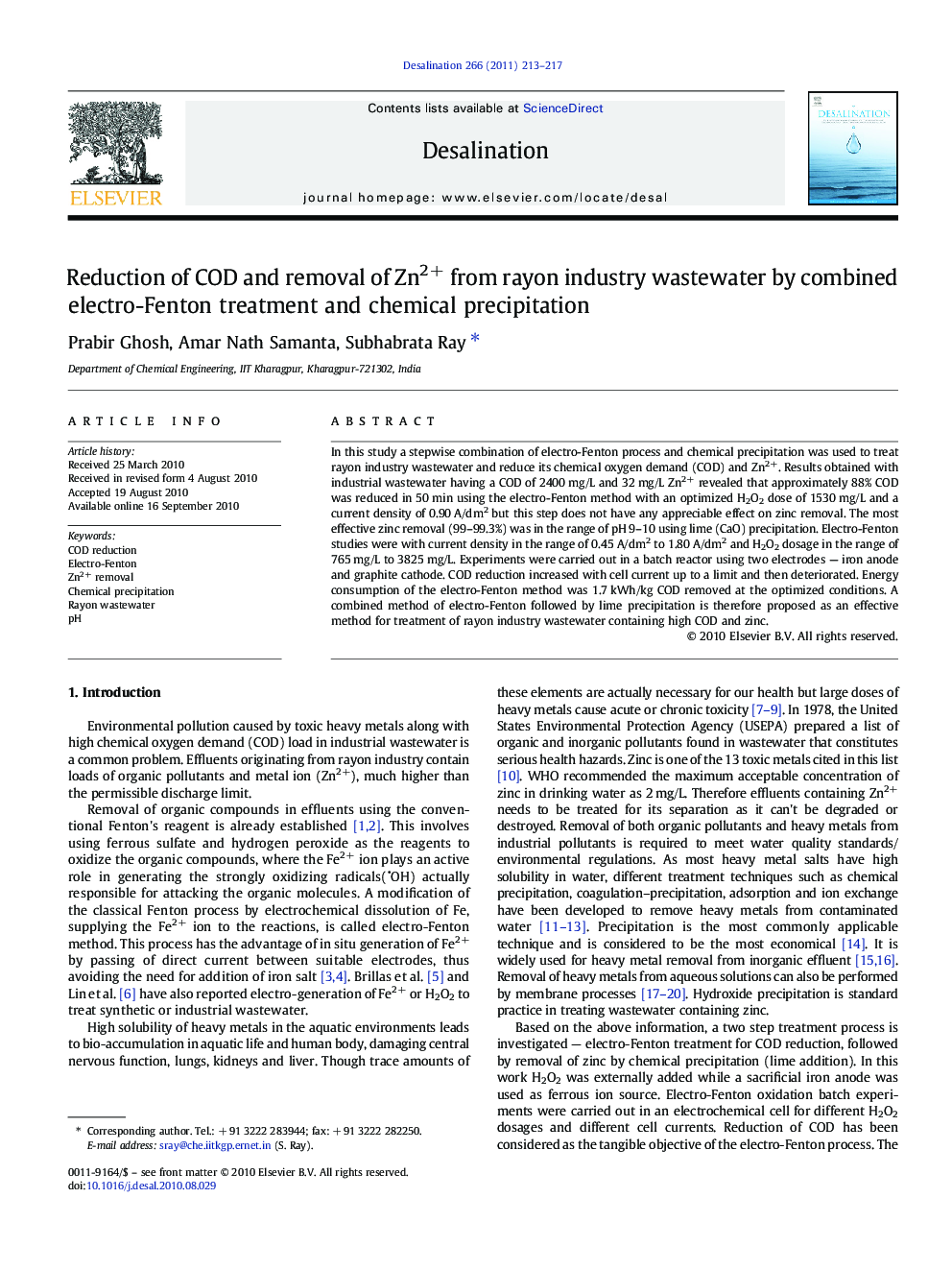| Article ID | Journal | Published Year | Pages | File Type |
|---|---|---|---|---|
| 625627 | Desalination | 2011 | 5 Pages |
In this study a stepwise combination of electro-Fenton process and chemical precipitation was used to treat rayon industry wastewater and reduce its chemical oxygen demand (COD) and Zn2+. Results obtained with industrial wastewater having a COD of 2400 mg/L and 32 mg/L Zn2+ revealed that approximately 88% COD was reduced in 50 min using the electro-Fenton method with an optimized H2O2 dose of 1530 mg/L and a current density of 0.90 A/dm2 but this step does not have any appreciable effect on zinc removal. The most effective zinc removal (99–99.3%) was in the range of pH 9–10 using lime (CaO) precipitation. Electro-Fenton studies were with current density in the range of 0.45 A/dm2 to 1.80 A/dm2 and H2O2 dosage in the range of 765 mg/L to 3825 mg/L. Experiments were carried out in a batch reactor using two electrodes — iron anode and graphite cathode. COD reduction increased with cell current up to a limit and then deteriorated. Energy consumption of the electro-Fenton method was 1.7 kWh/kg COD removed at the optimized conditions. A combined method of electro-Fenton followed by lime precipitation is therefore proposed as an effective method for treatment of rayon industry wastewater containing high COD and zinc.
Research Highlights►Electro-Fenton followed by alkali precipitation reduces COD and zinc from rayon plant wastewater. ►Electro-Fenton processes consume 1.7 kWh energy per kg COD removal. ►Optimum Electro-Fenton condition was achieved at 0.9 A/dm2 current density, 1530 mg/L H2O2. ►Alkali precipitation at pH 9 to 10 brings down Zn++ concentration from 32 to 0.2 mg/L.
